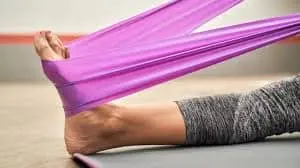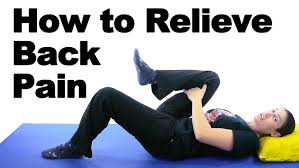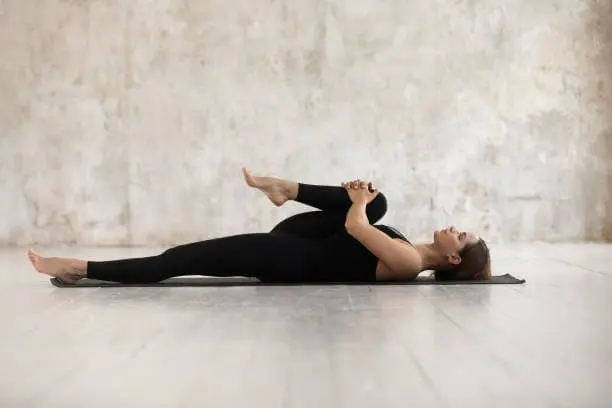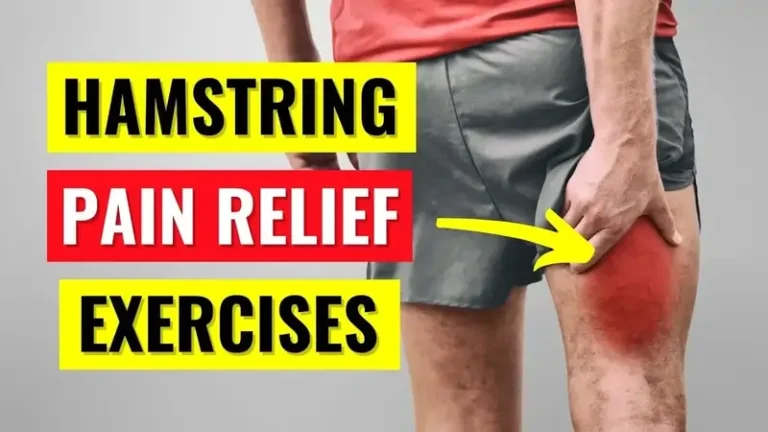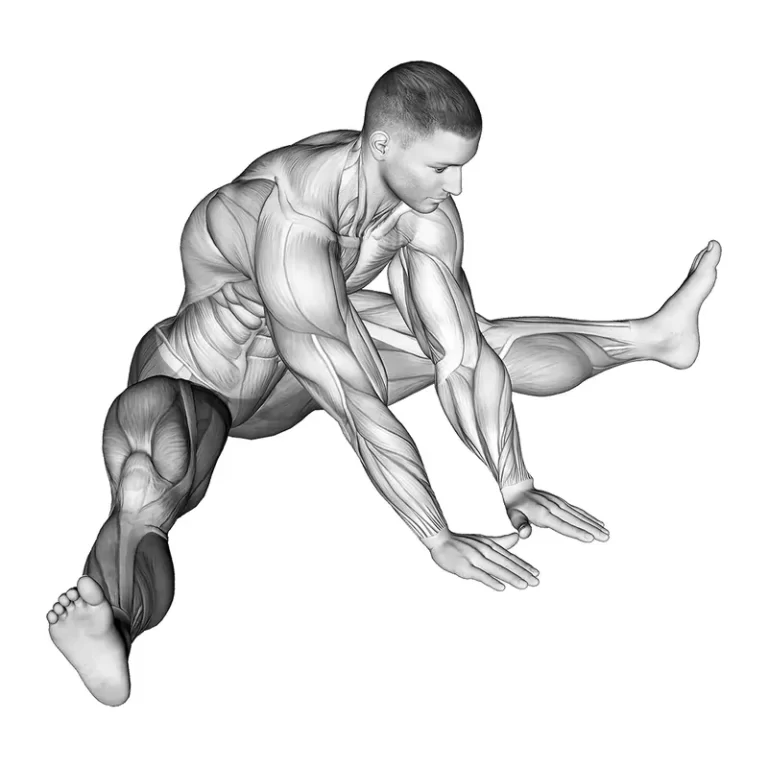17 Best Exercise for Flat Feet
Exercise for flat feet is a crucial part of your overall treatment plan. Incorporating specific exercises, along with foot supports, helps strengthen the arch of the foot, improving stability and reducing discomfort.
Introduction:
Pes planus, often known as fallen or collapsed arches, is the medical term used to describe the ailment known as flat feet. This is a fairly common condition that affects up to 30% of the population and causes symptoms to appear every ten years for people who have it. Although it is more common for both legs to be affected, a collapsed arch may develop in just one. Flat feet can be caused by a variety of issues, including obesity, arthritis, and traumas.
Flat feet require careful management since they can lead to imbalance, trouble walking, and occasionally pain in the ankle, hip, or knee joints. They can also put stress on other joints. Body-wide balance can be achieved by attending to one’s sense of well-being. Your flat feet may be the source of various health issues it can help you with.
Causes:
Genetics can play a role in flat-foot conditions at times. Due to flat feet, some people with this condition have shallow arches, while others have very high arches.
The following factors raise the likelihood of flat feet;
- Cerebral palsy
- Diabetes
- Rheumatoid arthritis
- Down syndrome
- Obesity
- Pregnancy
- Foot injury
Signs and symptoms:
- Muscles in the legs that hurt or feel exhausted
- Leg cramps
- Ankle, heel, arch, and sole pain
- When the front of the foot extends outside the shoe, this is known as toe rolling.
- Having trouble running and walking
- Ankle swelling could happen internally.
- Pain when walking or instabilities in your gait
Risk Factors:
Flat feet raise the possibility of developing this illness or other issues, such as;
- Shin splints
- Obesity
- Arthritis
- Bone spur
- Hallux valgus
- Diabetes
Consider the following safety precautions before starting an exercise program:
It’s crucial to take a few safety measures and optimize the benefits before beginning any exercise program. See your doctor or physical therapist to find out which exercises are best for your particular issue. It’s imperative that you pay attention to your body and not push yourself when it hurts. Exercise-related pain is common, but chronic or severe pain could indicate excessive exercise.
It’s crucial to keep up good form and technique to prevent repetitive injuries. If you’re not sure how to properly complete an exercise plan, consult a doctor. It is beneficial for your joints and muscles to warm up before an exercise session.
Exercise for Flat Feet:
Towel curls
- Take a seat in a comfortable position.
- Place your foot on top of the towel after spreading it out.
- It will begin to move toward you, the towel.
- All you have to do is raise your toes while maintaining a downward heel flexion.
- Keeping your heel on the towel, extend your foot as far as possible by stretching it equally in all directions and in the middle.
- Squeeze the towel in with your toes and up, keeping your heel straight.
- Grab the towel and bring it closer to you.
- On both sides of the foot, use all five fingertips to draw a broad circle beneath the arch area.
- Each pushback and extension movement just moves the towel in that designated area.
- Then return to your neutral position.
- Then relax.
- Repeat this exercise five to ten times.
- Repeat exercise with the other leg.
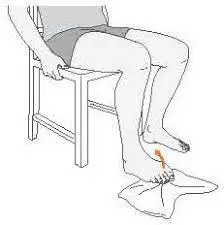
Heel Walking
- It is advised that during heel walking, you go forward on your heels.
- Walking on your heels will strengthen your heel muscles and improve your ankle joint’s balance.
- If you require some help with the exercise, use a wall.
- five to ten rounds of toe walking are possible in a single session.
- Then return to your neutral position.
- Then relax.
- Repeat this exercise five to ten times.
- You might add the barefoot or sand walking exercise into the program as you advance through it.
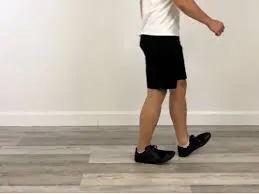
Calf Heel Raise One Leg
- Step onto the ground and adopt a standing position.
- Find your center of balance over your right foot and cross your left foot behind your right ankle.
- As you gradually lift your right heel off the ground or gracefully, brace your core and maintain forward vision.
- Hold this position for a few seconds.
- After holding at the top, pull your heel down under that step to go back to the beginning.
- Then return to your neutral position.
- Then relax.
- Repeat this exercise five to ten times.
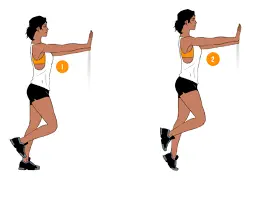
Marble pickup
- Sit upright on a chair and place both feet firmly on the floor.
- Arrange two bowls on the floor in front of the feet.
- One should be left empty, and the other should contain a minimum of ten to twenty marbles.
- All you have to do is plant each one with the toes of one foot in the empty bowl.
- Then return to your neutral position.
- Then relax.
- Repeat this exercise five to ten times.
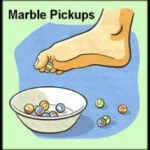
Ankle Plantar Flexion Isometrics
- The foot muscles become stronger with the ankle planter flexion isometric exercise.
- For this exercise, you can sit on the mat or plinth for a long time, and then With your foot supported up on a towel against the wall.
- Press your foot up against the towel.
- Hold this position for a few seconds.
- Then return to your neutral position.
- Then relax.
- Repeat this exercise five to ten times.
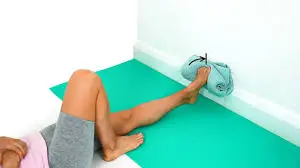
Heel raise with scrunch
- You needed a chair for support as well as a wedge and napkin for the heel rise with scrunch exercise.
- The affected foot’s heel can now be placed on a towel-covered wedge.
- Using your toes, compress or curl the towel, then bring your heel down to the surface below the horizontal.
- Use just your opposing leg to move yourself upward; after, shift all of your weight to the leg that is involved and return to your starting or regular position.
- Then return to your neutral position.
- Then relax.
- Repeat this exercise five to ten times.
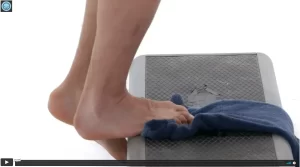
Arch lifts
- With your feet exactly beneath your hips, begin in a standing posture.
- Raise your arches as high as you can while maintaining touch with the floor with your toes and rolling your weight against the outside borders of your feet.
- Hold this position for a few seconds.
- Then, lower the arches of your foot.
- Then return to your neutral position.
- Then relax.
- Repeat this exercise five to ten times.
- Your arch-supporting and elevating muscles will be exercised.
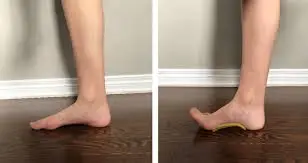
Plantar Fasciitis Stretch
- Take a seat on a chair on the ground.
- Across your front, extend your legs.
- Elevate the affected foot a few inches above the floor.
- Maintain a straight leg.
- Your affected foot’s toes should be grabbed and pulled in your direction.
- Feel the plantar fascia with your other hand.
- It should feel like it’s pushing forth.
- Hold this position for a few seconds.
- Then return to your neutral position.
- Then relax.
- Repeat this exercise five to ten times.
- Repeat with exercise on the other leg.
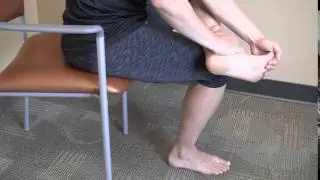
Tip Toe Walking
- You should walk on tiptoes when performing tiptoe walking.
- It’s an excellent way to strengthen the muscles and ligaments in your legs, ankles, and feet.
- It also makes balance better.
- five to ten rounds of toe walking are possible in a single session.
- Walking on tiptoe helps strengthen the ankle joint‘s balancing muscles.
- This gives the ankle joint stability and balance.
- Then return to your neutral position.
- Then relax.
- Repeat this exercise five to ten times.

Towel Stretch
- Stretch both legs out in front of you while seated on the floor.
- Then, secure the towel over the heel of the affected foot.
- Grab the ends in your hands.
- Bring the towel towards you while maintaining the straight leg that is affected.
- Hold this position for a few seconds.
- Then return to your neutral position.
- Then relax.
- Repeat this exercise five to ten times.
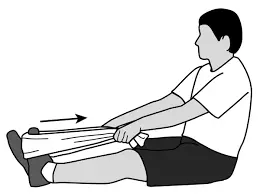
Inward calf heel raise
- Using the standing position, bring your heels nearer each other while keeping your toes apart to perform an inward turn calf heel raise.
- Elevate your heels and apply pressure on your toes.
- Hold this position for a few seconds.
- Lower your heels.
- Then return to your neutral position.
- Then relax.
- Repeat this exercise five to ten times.

Toe raises
- To start, walk forward and lean your back against a wall.
- Next, raise your toes on the ground.
- Hold this position for a few seconds.
- Lower your toes.
- Then return to your neutral position.
- Then relax.
- Repeat this exercise five to ten times.
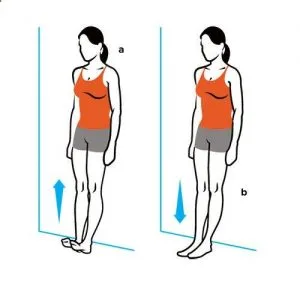
Calf Stretching
- To finish the calf stretch, stand facing a wall with your hands resting on it for support.
- Make sure your heel touches the ground when you shift your foot.
- Don’t forget to maintain your heel grounded and your rear leg straight.
- Hold this position for a few seconds.
- Then return to your neutral position.
- Then relax.
- Repeat this exercise five to ten times.
- Repeat with exercise on the other leg.
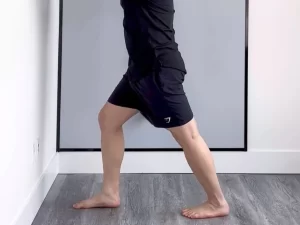
Heel Raise
- To start, find a comfortable standing position.
- To maintain balance, grip the chair’s back.
- To take a stand on them, raise your heels off the ground.
- Hold this position for a few seconds.
- Then take down your heels.
- Then return to your neutral position.
- Then relax.
- Repeat this exercise five to ten times.
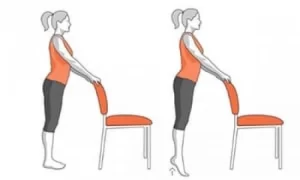
Sand walking
- Walking on the sand barefoot helps build strong, flexible legs and powerful calves.
- If you’re feeling exhausted, move to laps sooner rather than walking in the sand, which is more strenuous than walking on firm ground.
- If you find yourself at a volleyball court, beach, or desert, search for sand.
- Off with your shoes and socks and Take a quick walk after that.
- Then relax.
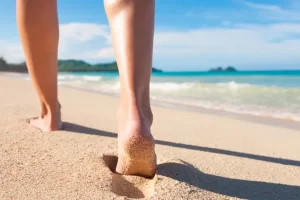
Stair arch raises
- Place your left foot one step higher than your right when standing on steps.
- As you bring your right foot down so that your heel hangs below the step, use your left foot for balance.
- Focus on strengthening your arch and progressively raise your right heel as high as you can.
- Your knee and calf should rotate slightly to the side as you rotate your arch inward, making it higher.
- Return to the starting position slowly.
- Then return to your neutral position.
- Then relax.
- Repeat this exercise five to ten times.
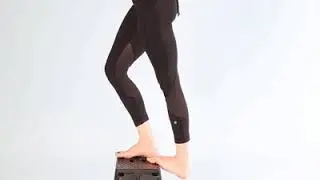
Tennis Ball Rolls
- To begin, grab a seat in the chair.
- Place the back of your knee a few centimeters away from the chair’s edge.
- Place a tennis ball or any other ball with a similar size and firmness on the ground.
- Using your leg weight as an advantage, roll your foot over the ball softly, paying particular attention to the arch area.
- Continue for two to three minutes.
- Then return to your neutral position.
- Then relax.
- Repeat this exercise five to ten times.
- Repeat with the other leg.
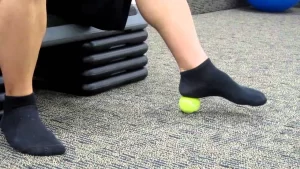
What safety measures are necessary when working out?
- Make moderate bends and stretches.
- Keep your posture straight when exercising.
- For the ideal training experience, choose loose, casual clothes that encourage relaxation and maximum range of motion. Stay away from very fashionable or tight clothing.
- When working out, try to avoid using any jerky or aggressive movements.
- Avoid engaging in difficult activities.
- Take a break between exercises.
- In line with the protocol, stretches should be done both before and after sets, as well as the recommended number of repetitions for each exercise.
- It is common, though sometimes challenging, to stretch the strained muscles in your joint. Since stretching and exercise are bad for you and worsen your sickness, they shouldn’t hurt or make you feel like someone is stabbing you.
- If the pain gets severe, stop right away.
When are you going to stop working out?
- Fever
- Exercise should be stopped if it hurts.
- Severe burning in the muscles.
- You don’t feel good.
- If numbness or pain are present.
- Headache
How to prevent getting flat feet:
It is not possible to avoid the development of flat feet by specific sports or exercise regimens. You may, however, stay away from the risk factors listed below, which raise your likelihood of developing this illness:
- Obesity is known to raise the risk of developing pes planus problems.
- Individuals who suffer from diabetes must make an effort to control their blood sugar levels.
- Make an effort to manage or sustain your inflammatory disease (like rheumatoid arthritis).
- Sometimes there is no cure for pes planus in inherited diseases, therefore your only options are to avoid the factor or engage in regular activity to keep your arches normal.
- Pay attention to the shoes you choose. For everyday wear, stay away from flat or heeled shoes. Make sure your shoes fit properly, especially if your job requires you to walk or stand for extended periods.
Home remedies:
The following at-home treatments for flat feet can be used if your symptoms are not too severe;
- Get some rest if you can
Refrain from sports and physical activity. if participating in a particular activity causes you to have foot pain or other symptoms. Alternatively, elevate your foot and apply cold packs to the areas that hurt. cold therapy involves giving your feet a three to four-hour ice massage, three times a day.
- Change Out Old, Damaged Shoes
Your anxiety may worsen if you wear old shoes. Purchase customized shoes with arch support if you begin to experience pain and discomfort in your legs.
- Keep your weight in check
You should reduce your weight if flat feet have started to cause you pain and discomfort.
Summary:
When the flat foot begins to experience stressful or challenging walking, irregular locomotion, or walking pattern, can occasionally result from flat feet, and this irregular gait puts strain on other lower extremity joints such as the ankle, knee, and hip joints. You experience pain, tenderness, cramping in your legs, and swelling when you have flat feet.
Start with the stretching exercise, which lengthens and improves the mobility of the muscles in your feet. Next, include the mobility exercise, which involves extending and flexing all ankle joints. The muscles and joints can move more freely after engaging in mobility exercises. Exercises for strengthening the flat feet might help reduce or perhaps get rid of pain. Nonsteroidal anti-inflammatory medicines (NSAIDs) are the recommended medication if you are experiencing acute discomfort.
FAQ:
In what ways does being flatfoot impact a person’s life?
Foot flatness has many disadvantages. Those who have flat feet, for instance, may experience instability when jogging or walking and are more likely to experience back pain. It is not evenly distributed throughout the body, which puts additional strain on specific joints including the ankle, knee, and hip joints.
If we had flat feet, what activities did we stay away from?
Shoes with thin or flat soles, flip-flops, and some styles of high heels should be avoided by both men and women with flat feet as they provide little to no arch support. Seek out footwear that offers the stability you require to engage in physical activity safely. Long periods of standing should also be avoided as they become increasingly painful.
What situations can lead to flat feet?
Hallux valgus, calluses, and corns Overpronation, which occurs when your foot flattens and lands on the ground unevenly, can result in the development of a hallux valgus deformity. Flat feet can also cause corns and calluses from parts of your foot rubbing against your shoes undesired.
Does speed change with flat feet?
The condition known as Pus planus, or flat foot, is characterized by excessive pronation of the foot. This causes the ankle to lose its ability to stabilize the body, which decreases the ankle’s capacity to absorb shock. Running speed is unaffected, but running puts additional strain on the ankle, hip, and knee joints, among other lower extremity joints.
Is it possible to treat flat feet with exercise?
It’s possible to cure flat feet, and you should do exercises like heel stretches regularly to help with pain management and arch correction. Another name for pes planus is collapsing or falling arches. It is a comparatively common illness that can afflict up to 30% of the population, with symptoms appearing in 10% of cases. You can use an orthosis to give your flat feet the correct anatomical structure, except for workouts.
Is it possible to correct flat feet?
Certain exercises for strengthening and lengthening muscles can be prescribed by a physical therapist for treating flat feet. Additionally, they might advise you on specific lifestyle modifications, such as working on strengthening your core and changing the way you stand and walk.
Are flat feet ever going to become normal?
This could delay until a youngster is older than five years old if they have flexible flat feet. By the time they are ten years old, the majority of children with flat feet typically start to acquire regular arches, thus having flat feet in their early years does not guarantee it.
References:
- D. Prajapati (2024, Jan. 13). Physio Samarpan: The Top 23 Exercises for Flat Feet. Physiotherapy Clinic in Samarpan. The 23 Best Exercises for Flat Feet at Saramarpan Physio Clinic
- Cronkleton, E. April 19, 2023. Activities for Uneven Feet. Flat-foot workouts on Healthline: https://www.healthline.com/health
- B. Australia (n.d.-b). Bauer-Feind. Germany-Australia. #top-7-flat-foot-exercises – https://bauerfeind.com.au/blogs/news/?srsltid=AfmBOoocn3SqCFt1dov1fHJ8SLPgjzl2dMZW2JSKYUfoP0rDzeBjPUJo
- S. Physio (n.d.–b). Surrey Physio’s Top 5 Flat Foot Exercises. Physio Surrey. The top five exercises for flat feet are available at https://www.surreyphysio.co.uk.
- Image 2, On March 6, 2022, Song, D. Heel Walk: Hero in Rehabilitation. Rehabilitation Champion. Exercise: heel walk at https://www.rehabhero.ca
- Image 3, Physiology. (n.d.-a). Calf endurance blog at Spooner Specialist Physiotherapy, Inc.
- Image 5, Get My Patient Well Again. 2022a, 25 January. Exercise for Ankle Plantar Flexion Using Isometrics [Video]. YouTube. This video can be seen at https://www.youtube.com.
- Image 6, Upstep: Online Custom Orthotics Insoles for Daily & Sport Use. (No date). eccentric heel raises scrunch exercise at https://www.upstep.com
- Image 7, April 26, 2021: Digital, R. Foot Doming Exercise’s Advantages – Burlington Sports Therapy. Sports Therapy in Burlington. Benefits of foot-doming exercise: https://burlingtonsportstherapy.com/blog/
- Image 9, On February 10, 2020, Leigh, K., and Leigh, K. Facts That Parents Should Understand About The Incredible Kids That Toe Walk. Sensational Kids. What Parents Need to Know About Toe Walking: https://www.sensationalkids.ie/
- Image 11, On February 21, 2014, Wilkins, T. Fit Fridays: Seven Exercises to Avoid the Most Common Sports Injuries – Hoops Education. The most popular sports that cause injuries and the seven exercises that can help prevent them are covered by Hoops Education.
- Image 16, Whitney Stevenson. (April 19, 2019). [Video]: Stair Arch Raises. https://www.youtube.com/watch?v=Ur4PR_vXuxs

